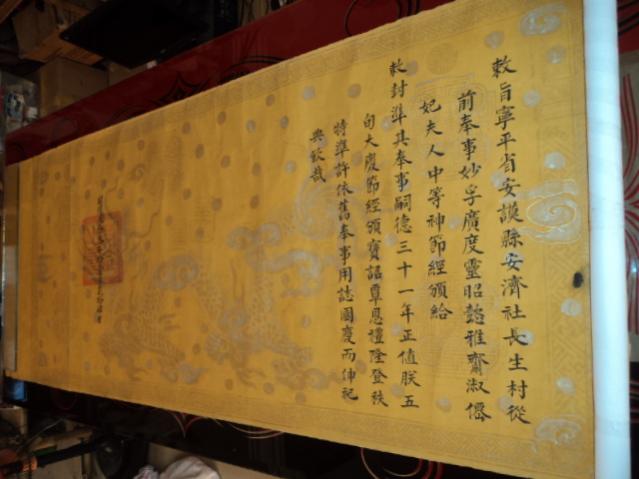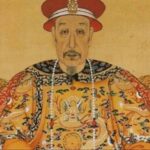Edicts: An Insight into Ancient China’s Imperial Power
Edicts, or imperial decrees, were an integral part of the feudal system, especially in the political context where emperors made significant decisions or announced momentous events. Typically, eunuchs were tasked with reading out these edicts to the court and the people. Timely and deeply connected to court affairs, these decrees, also known as “holy edicts,” held much influence.
In the history of China, before the Song Dynasty, edict documents were often compiled in the form of small books. However, during the glorious development of the Tang Dynasty, these small books flourished, and the process of their creation became very meticulous.
When an emperor issued a decree, depending on its purpose and function, the edicts were classified into two groups: those that addressed crucial court matters and those used for daily administrative tasks, usually presented on yellow paper.
Departing from previous traditions, during the Yuan Dynasty, court decrees were transformed into formal documents, often used for significant events such as inauguration ceremonies or the establishment of a new dynasty. Notably, the choice of typeface became extremely important. As most Yuan emperors had a limited education, they favored the use of written language, with Mongolian often chosen for drafting decrees. This not only helped them avoid the challenge of writing in Han Chinese but also ensured the direct transmission of the emperor’s wishes without the need for translation.

Edicts—a distinctive product of the feudal system, especially in the political context of imperial decrees
The process of creating these decrees was also intricate. Through their daily speeches, emperors primarily used plain language, a habit that continued until the Qing Dynasty. Via television works, the public could sense the emperor’s supreme power and grasp the calculations and struggles among the courtiers. So, why didn’t anyone dare interfere with the court’s edicts in ancient times?
There are many reasons for this caution, mainly stemming from the strict feudal system and the sacred nature of imperial power.
The Production Process of Imperial Edicts
The production of imperial edicts, a manifestation of the emperor’s power, required exquisite craftsmanship and the involvement of talented individuals carefully selected by the Ministry of Internal Affairs. Participating in this process was not easy; only those with exceptional skills were permitted, making forgery almost impossible.
The material used for these holy edicts was not ordinary fabric. Instead, it was made from special, colorful materials supplied by the royal family. These materials were extremely rare and inaccessible or challenging to craft for common people. Additionally, the length and content of the decrees were often extensive, not fully depicted in television dramas.

The material used for imperial edicts was not ordinary fabric
Summoning an edict required the support of four to five people. Historically, their roles were crucial, as the authority of imperial edicts was indisputable. Every step, from drafting the content to sealing, underwent multiple layers of supervision. Each participant had to sign and confirm their responsibility.
If there was any doubt in the process, it would be immediately investigated. Once fraud was detected, the individuals involved would be swiftly identified. This stringent system could lead to criminal punishment for those responsible, or even more severe consequences, including loss of life, and their families might also be implicated. Therefore, the possibility of forging imperial edicts was extremely low, ensuring the integrity of imperial power.
Revering Heaven’s Mandate and the Role of Imperial Edicts
In ancient society, Heaven’s Mandate was revered, and the emperor’s words carried supreme influence. Any court decree significantly impacted the country’s political stability, so each document was secured with anti-counterfeiting measures. Forging such documents was not a simple task for individuals or ordinary organizations.
Typically, court decrees were announced by eunuchs, a position that required not only accuracy in tone but also the ability to convey the emperor’s will clearly. This demand made the eunuch’s job very complex and challenging.

Court decrees were typically announced by eunuchs, conveying the emperor’s will
Chinese museums currently hold 65 imperial decrees, mostly from the Ming and Qing Dynasties. Genuine documents from this period, especially the Qing Dynasty, are often valued at a minimum of 2 million yuan. However, due to various historical upheavals, finding such precise artifacts is difficult, as the number of surviving court edicts is exceedingly rare.
Although the possibility of forging imperial decrees was low, there have been significant forgery incidents in history. One notable event was the collaboration between Li Si and Zhao Gao during the Three Kingdoms period. They used a fake decree to proclaim a new emperor after the death of Qin Shi Huang, leading to the fall of a powerful empire.
In the 21st century, counterfeiting technology has advanced astonishingly. To verify the authenticity of any document, we need the combined efforts of human intelligence and technology. The present age is considered the “world of fakes,” where everything can be replicated. A notable example is academic fraud, including plagiarism and the replication of others’ research results, reflecting an unacceptable desire for easy success.
The Ultimate Guide to Traveling丽江 – Shangrila on a Budget: A Journey Without Mandarin.
“For their 8-day, 7-night trip to Lijiang and Shangrila, Mr. and Mrs. Nguyet from Hanoi, Vietnam, crafted their own itinerary with a total budget of 13.5 million VND per person. By planning their trip independently, the couple had the freedom to choose destinations that suited their personal preferences and interests.”
The Ultimate Guide to Livestream Selling: “Customers Can’t Keep Up with the Goods” Strategy from Douyin’s Top Sellers
“Unique and captivating, these videos showcasing the creative and eccentric online selling techniques of women across the border are taking the social media world by storm. Their innovative approaches to selling products are not just entertaining but also highly effective, and people can’t get enough of them.”






































